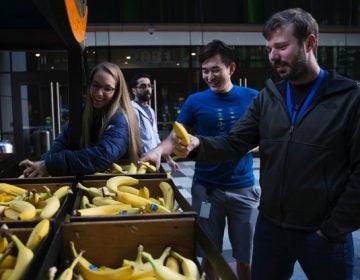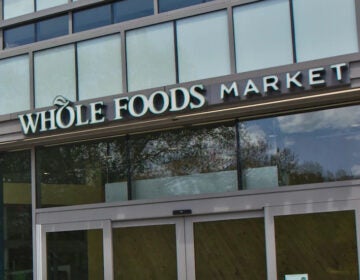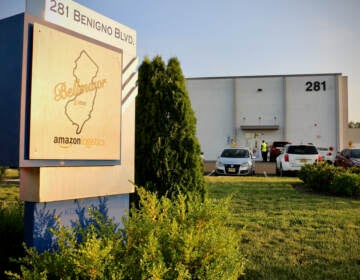When Amazon HQ2 arrives, tech's diversity problem could come too
When Amazon builds its new headquarters in some lucky city, diversity issues could be part of the bargain. At least, if things go like they did in Seattle.
Listen 0:00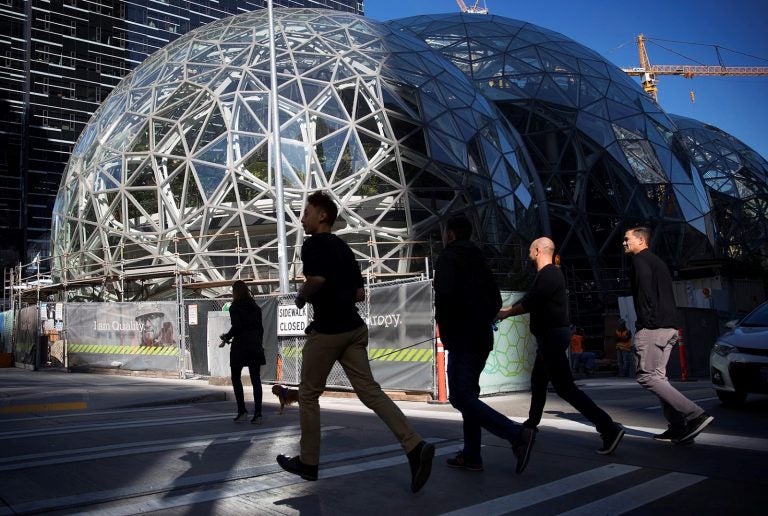
Amazon’s headquarters in Seattle. (Megan Farmer/KUOW Photo)
Philadelphia, Pittsburgh, Wilmington and Camden are among the cities competing to land Amazon’s second headquarters and that has many people wondering what could happen if the company actually picked their city. To get some answers, we turned to our fellow NPR member station, KUOW in Seattle, home to Amazon’s first headquarters.
—
It’s lunchtime in Seattle’s South Lake Union neighborhood. Employees pour out of Amazon’s headquarters. Ruchika Tulshyan and I sit on a bench, watching them. Tulshyan is a Seattle author and journalist who covers diversity in the tech industry.
Tulshyan lists off who she sees coming in and out of the building.
“Currently, I see a group of about, I’d say 6 — all men. Almost everyone in the group is white and probably around the age of 30.” she says.
In Seattle, we call those guys “tech bros.” We know they work for Amazon because they have the badges to prove it.
There are other kinds of people, too, some speaking different languages. Young men of apparent Asian or Southeast Asian ancestry. They’re dressed like programmers, in hoodies and jeans. An African-American man wipes down the surfaces around the building.
Tulshyan says Amazon brings a lot of wealth and opportunity to Seattle, but it’s not equally shared. Amazon’s top executives are white and mostly men.
“We see a lot of people of color at Amazon as support employees, warehouse employees, but certainly when it comes to decision-making capability, certainly when it comes to those big fat stock options and those big salaries, it goes to white employees,” said Tulshyan.
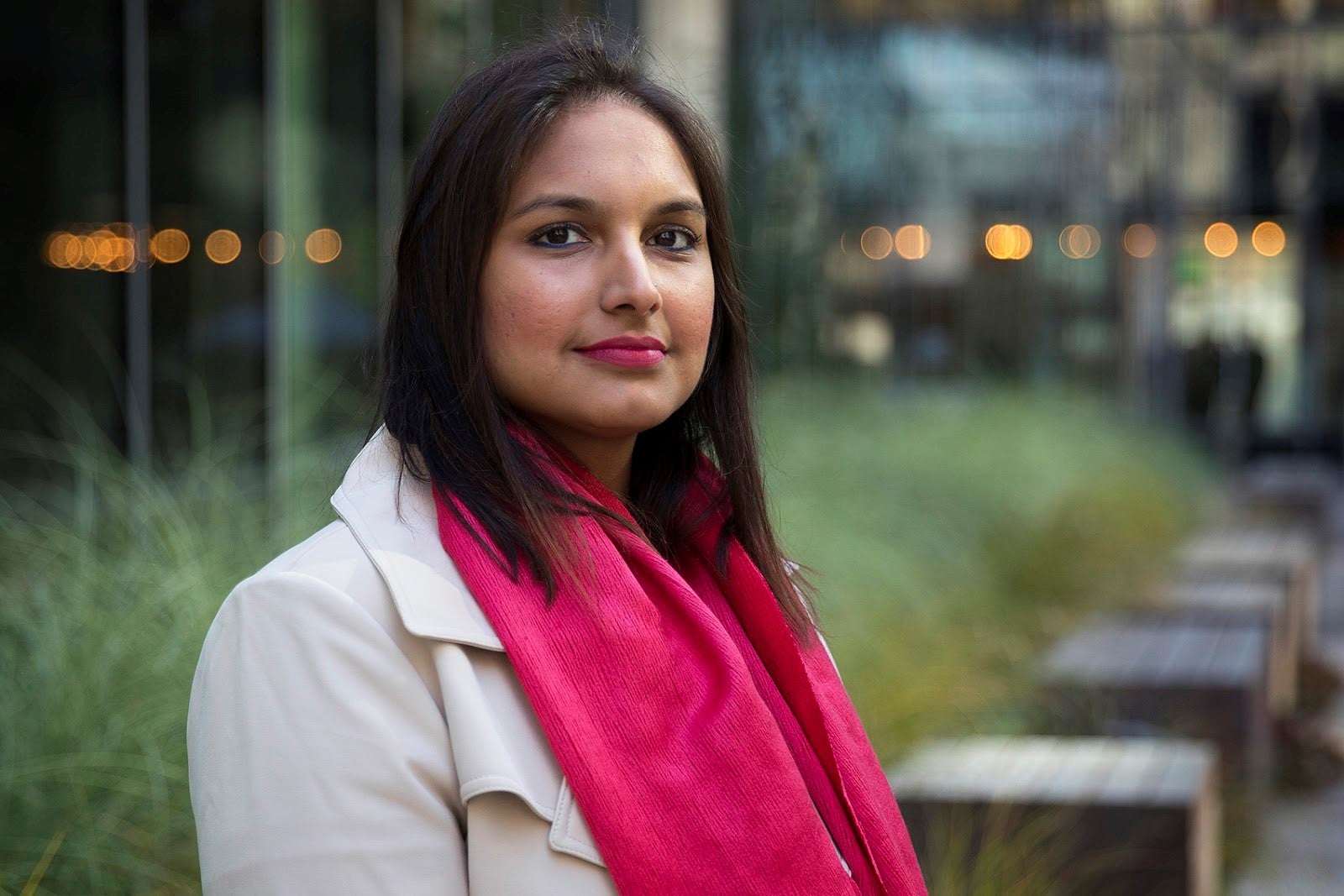
The whiteness of the tech industry has made Seattle more white. The city has grown two percent whiter since 2010.
You can see the change happening. Seattle’s neighborhood of Beacon Hill has long had a strong Asian-American community. Austin-Monique Subelbia grew up there.
“Our neighbors were more than just people we lived next to. But more like they were close to family,” Subelbia recalled. “Like I would call some of my neighbors ‘auntie’ and ‘uncle’ even if we weren’t related.”
But Subelbia doesn’t work in tech — she works in restaurants. When it came time for her to get a place of her own, she couldn’t afford Beacon Hill. The neighborhood had been “discovered.” She said it feels like a battle.
“The uprising of white men on Beacon Hill – white men and their families – is changing the dynamic of the hill,” she said. “I think it’s great to have for Seattle to have growth in that way. I’m not sure how I feel about how they are kind of taking over.”
Subelbia bought a place just outside Seattle’s city limits.
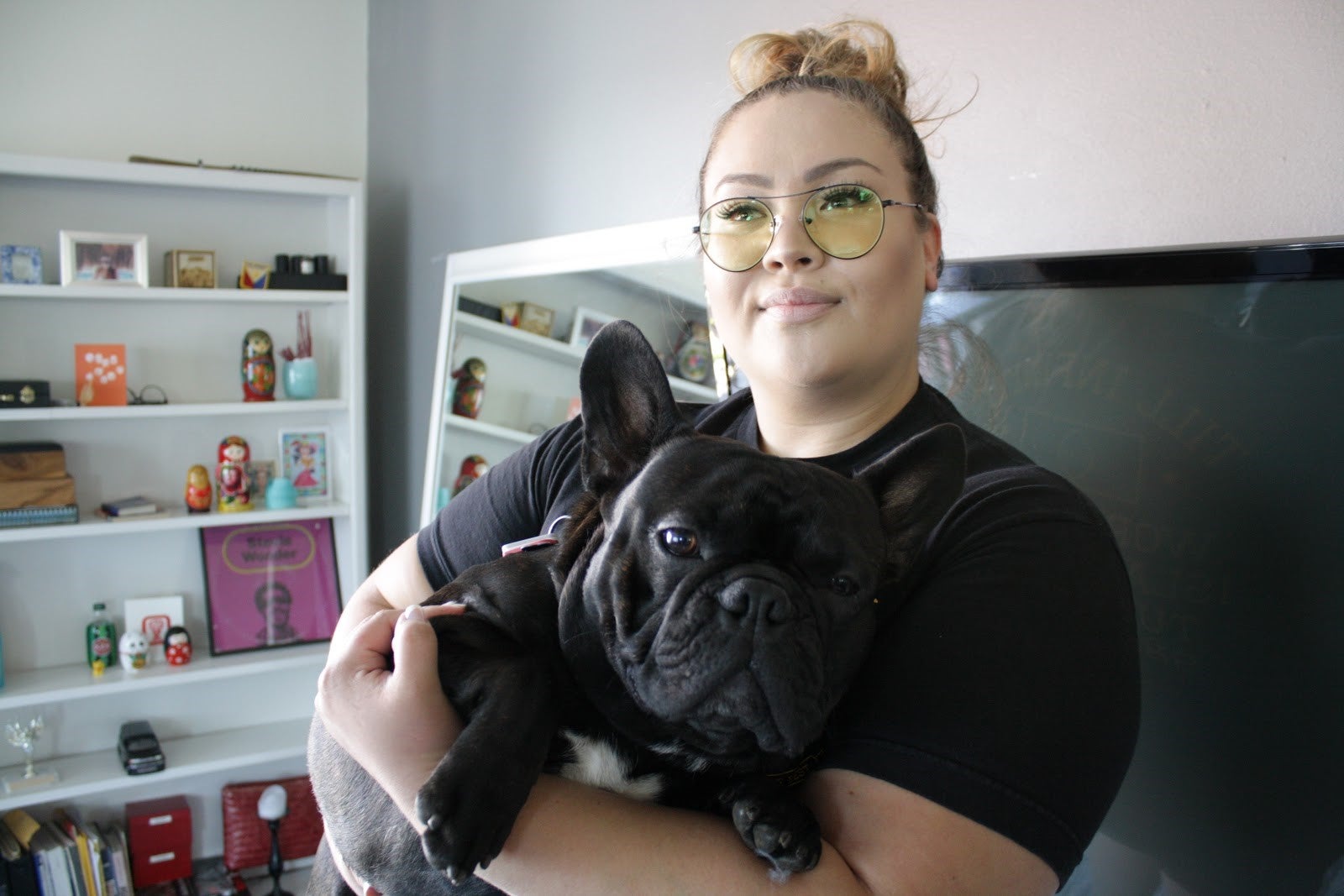
Amazon is trying to change things. It’s invested $60 million in programs nationally to develop diverse coding talent. And inside the company, small groups work to represent minority interests.
Mark Hatcher part of Amazon’s Black Employee Network.
“What they are is an affinity group,” he explained. He said African-American Amazonians and their allies in the group focus on “the recruitment and the retention of qualified African-American candidates.”
Amazon has many groups like this, such as Glamazon, a group for LGBT employees.
And company officials love to highlight a new program called “Career Choices” that takes Amazon’s most diverse employees — people who’ve worked at fulfillment centers — and pays their college tuition. It’s served 10,000 people so far.
But critics say Amazon hasn’t done nearly enough.
“You know, I think that’s kind of an absurd criticism,” said Michael Schutzler. He’s CEO for the Washington Technology Industry Association, a trade organization financed by companies including Amazon.
Schutzler acknowledges the tech industry has a diversity problem. But he argues it’s not fair to expect Amazon to fix everything alone.
“This company is just now kind of getting its feet under it,” he said. Sure it’s had a huge impact on Seattle, but it’s not even reliably profitable yet. Schutzler said Amazon needs time to address its diversity issues. “At least they’re making progress,” he said.
Schutzler thinks the real reason Amazon is so white is that Washington State’s tech pipeline is white.
“The reason ours looks the way it does is that our state has been defunding higher education for 25 straight years,” he said.
Now Amazon wants to bring 50,000 employees to a second headquarters. Schutzler said cities that want to retain their diversity even if they win that prize need to take a good look at their state education system.
Because Amazon can’t fix that.
WHYY is your source for fact-based, in-depth journalism and information. As a nonprofit organization, we rely on financial support from readers like you. Please give today.


